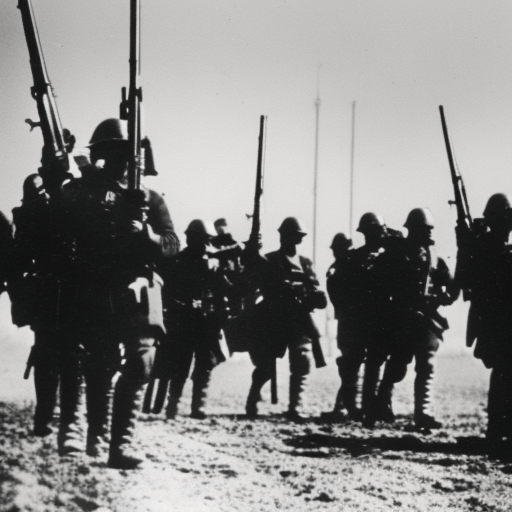Battle of Arras: A Brief Summary
The Battle of Arras was a major military engagement that took place during World War I. It occurred from April 9 to May 16, 1917, near the town of Arras in northern France. The battle was fought between the British and Canadian forces on one side, and the German army on the other. The primary objective of the British was to break through the German lines and relieve pressure on the French army, which was engaged in the Battle of the Aisne.
The Prelude to the Battle
The Battle of Arras was part of a larger British offensive known as the Nivelle Offensive. The British planned to launch a diversionary attack at Arras to draw German troops away from the main French offensive. The British forces, under the command of General Sir Edmund Allenby, amassed a significant number of troops and artillery in preparation for the battle.
The Battle Begins
On April 9, 1917, the British and Canadian forces launched their attack on the German positions around Arras. The initial assault was successful, with the British capturing several key objectives, including the strategic Vimy Ridge. The Canadians played a crucial role in this victory, demonstrating their skill and bravery in the face of heavy German resistance.
Trench Warfare and Tunneling
The Battle of Arras was characterized by the brutal trench warfare that had become the hallmark of World War I. Both sides dug elaborate networks of trenches and fortified positions to protect their troops. The British and Canadian forces also employed tunneling techniques to undermine and destroy German positions. These tunnels were used to plant explosives beneath enemy trenches, causing massive explosions and creating opportunities for infantry assaults.
The Challenges of the Battle
The Battle of Arras presented numerous challenges for the British and Canadian forces. The German army was well-entrenched and heavily fortified, making it difficult for the attackers to gain ground. The flat and open terrain around Arras also exposed the advancing troops to enemy fire, resulting in heavy casualties. Additionally, the British forces faced logistical challenges, as the muddy conditions and constant shelling made it difficult to maintain supply lines.
The Outcome and Legacy
Despite the challenges, the Battle of Arras achieved some significant successes for the British and Canadian forces. The capture of Vimy Ridge was a major victory, as it provided a commanding view of the surrounding area and allowed the Allies to advance further. The battle also inflicted heavy casualties on the German army and diverted their attention from the main French offensive.
However, the Battle of Arras ultimately failed to achieve its main objective of breaking through the German lines and relieving pressure on the French army. The British offensive stalled, and the battle settled into a stalemate. The high casualty rates and limited gains made the Battle of Arras a costly engagement for both sides.
In conclusion, the Battle of Arras was a significant military engagement during World War I. It showcased the bravery and skill of the British and Canadian forces, but ultimately failed to achieve its objectives. The battle highlighted the challenges of trench warfare and the devastating impact of artillery and machine gun fire. The Battle of Arras remains an important chapter in the history of World War I and serves as a reminder of the sacrifices made by those who fought in the conflict.












